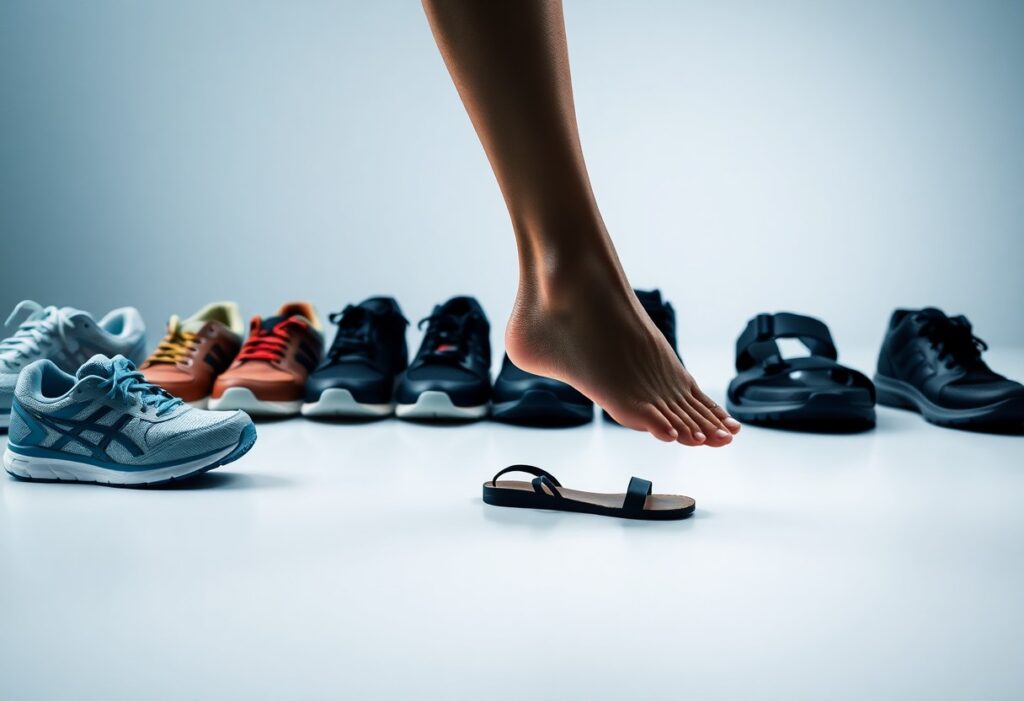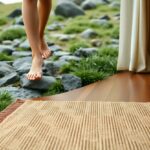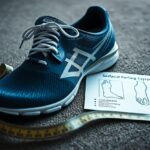
The footwear you wear while walking can greatly impact your foot health, either positively or negatively. Many people mistakenly think that shoes with added cushioning and support are the best remedy for foot pain. However, the reality is that conventional shoes often do more harm than good to your feet. According to Dr. Alissa Kuizinas, a podiatrist based in Massachusetts, barefoot shoes or minimalistic shoes can help fortify and improve foot health. By opting for shoes that allow your feet to move naturally, you can significantly reduce the risk of developing various foot-related issues, thus enhancing your overall foot wellness.
Recognizing the Limitations of Traditional Shoes for Foot Health
Although conventional shoes may provide temporary relief from foot discomfort, they frequently exacerbate existing issues and introduce new problems. Dr. Alissa Kuizinas points out that the $133 billion shoe industry often prioritizes style and profit over genuine foot health, resulting in designs that can constrict and weaken your feet over time. This reliance on traditional footwear can create a cycle of dependency that ultimately jeopardizes your foot health.
How the Footwear Industry Fails to Address Foot Health Concerns
The shoe industry’s flawed approach to foot health lies in its focus on adding excessive cushioning, support, and rigid structures to shoes, often neglecting the root causes of discomfort. This strategy can encourage a dependency on footwear that may ultimately deteriorate your foot health over time, leading to a range of complications that could have been easily avoided with better design. It’s crucial to recognize this disconnect and seek footwear that genuinely supports foot wellness.
Spotting the Deficiencies in Traditional Shoe Design
Traditional shoe designs often include narrow toe boxes, rigid soles, and excessive cushioning, which can restrict natural foot movement, leading to weak and dysfunctional feet. Dr. Kuizinas insists that shoes should protect your feet from external elements, rather than limit their natural motions. A well-constructed shoe should emphasize natural foot functionality and minimalist qualities, such as ample toe space, flexible and flat soles, and minimal cushioning to promote optimal foot health.
By adopting barefoot shoes or minimalistic footwear, you can actively strengthen your feet and significantly improve your overall foot health. Dr. Kuizinas promotes a philosophy of utilizing as little shoe as necessary, allowing your feet to function naturally and move freely, which is vital for maintaining healthy foot mechanics and preventing potential issues.
The Vital Importance of Allowing Natural Foot Movement
Footwear that restricts your foot’s natural ability to move can lead to a myriad of foot-related issues and discomfort. Evaluating how your shoe choices affect your overall foot health and comfort is crucial for maintaining well-being.
Understanding How Shoes Influence Foot Mobility
To comprehend how your footwear impacts your foot’s range of motion, it is essential to analyze the specific design elements and characteristics of your shoes. Traditional footwear often incorporates cushioning and support features that can inadvertently hinder your foot’s natural movements, ultimately leading to weak and dysfunctional feet. Such limitations can prevent your feet from developing the necessary strength and flexibility, making it vital to choose shoes that promote natural foot function.
Realizing the Benefits of Allowing Natural Foot Mobility
The benefits of permitting your feet to move freely are extensive, as strong feet serve as a foundation for overall foot health. By choosing minimalistic shoes or barefoot footwear, you empower your feet to function naturally, fostering strength and durability. Movement is essential for developing strong feet. When impeded by traditional footwear, you risk encountering numerous foot problems and discomfort. In contrast, embracing minimalistic shoes or barefoot options can significantly enhance your foot health by allowing for natural movement and facilitating muscle development.
By making informed decisions regarding your footwear, you can reduce the likelihood of developing foot ailments and improve your overall foot wellness.
Diving into the Concept of Functional Footwear
Understanding functional footwear is essential, as these types of shoes prioritize both foot health and the promotion of natural movement. Functional shoes are meticulously designed to enable your feet to operate as intended, eliminating the need for excessive support or confinement.
Characteristics That Define Functional Shoes
Through research and experimentation with different shoe styles, you’ll find that functional footwear possesses distinct characteristics, including a spacious toe box, flat and flexible soles, coupled with minimal cushioning and support. These features allow your feet to move freely and naturally, fostering stronger and more efficient foot mechanics.
Enhancing Foot Health Through Functional Shoes
Wearing functional shoes provides numerous advantages, such as improved foot strength, reduced risk of injury, and enhanced overall foot health. These shoes facilitate your feet to function as they were designed to, paving the way for stronger feet and improved balance throughout your daily activities. Conceptually, functional footwear is crafted to support your feet without unnecessary restrictions, allowing them to move and flex freely. This design philosophy promotes optimal foot health and minimizes the risk of developing foot ailments. By selecting functional shoes like barefoot shoes or minimalistic options, you actively encourage healthy foot function and reduce the chances of foot pain and injury. Transitioning to functional footwear may require some patience and gradual adjustment, but the long-term benefits for your foot health are invaluable.
Key Features to Look for in Functional Footwear
To achieve optimal foot health, it is critical to seek shoes that come equipped with specific features. The essential attributes to consider include:
- Wide toe box
- Flat and flexible soles
- Minimal cushioning and support
Being aware of these characteristics will significantly assist you in selecting shoes that promote healthy foot function and provide adequate support.
The Significance of Wide Toe Boxes and Flexible Soles
A fundamental aspect of functional shoes is a wide toe box, which allows your toes to spread comfortably. This design helps prevent toe jamming and other discomfort-related problems that could lead to chronic foot pain. Ensuring that your footwear accommodates the natural shape of your foot is crucial for maintaining comfort and health.
The Necessity for Minimal Cushioning and Support in Footwear
In addition to a wide toe box, functional shoes should feature minimal cushioning and support. This design element encourages your feet to engage in natural movement while strengthening foot muscles, thereby lessening the risk of foot issues. It’s essential to emphasize that minimalistic footwear, such as barefoot shoes, can greatly enhance your foot health by allowing your feet to function freely. Opting for shoes with minimal cushioning and support can improve muscle strength in your feet and decrease the chances of injuries. This strategic approach not only elevates your overall foot health but also reduces the likelihood of experiencing chronic pain. Therefore, prioritize footwear that allows for natural foot movement without excessive cushioning or support.
Successfully Transitioning to Functional Footwear
Having recognized the significance of functional footwear, it’s time to embark on your transition journey. Contrary to popular belief that more cushioning and support equate to better comfort, you should seek minimalistic shoes or barefoot shoes that facilitate your feet’s natural functions.
Actionable Tips for Transitioning to Functional Footwear
Despite any hesitations, you can begin incorporating functional shoes into your daily routine with these practical recommendations:
- Start with short walks and gradually increase the distance
- Choose shoes with a wide toe box and flat soles
- Select minimal cushioning and support
The key is to give your feet ample time to adjust to the new shoes while simultaneously strengthening the muscles in your feet.
The Importance of Patience During the Transition Process
Transitioning to functional footwear requires patience and a gradual approach. Overly minimalist shoes can lead to discomfort and pain if your feet are not used to them. Starting slowly is crucial, allowing your feet to acclimate to the new styles. Footwear options like barefoot shoes or minimalistic shoes can be incredibly beneficial for your foot health, but it is essential to introduce them gradually. Overuse or improper sizing can lead to injuries or persistent discomfort. The ultimate goal is to strengthen your foot muscles while enhancing your overall foot health, so exercise patience and avoid rushing the process. The rewards will be profound; anticipate experiencing improved balance, reduced pain, and stronger feet.
Building Strong and Functional Feet for Better Health
Even in a world dominated by shoes with excessive cushioning and support, you can cultivate strong and functional feet by making informed footwear choices.
Exploring the Impact of Foot Strength on Overall Wellness
Alongside other health considerations, foot strength is a crucial factor influencing your overall well-being, as it affects your balance, posture, and movement capabilities.
How Functional Footwear Promotes Strong Feet
Functionally designed shoes featuring a wide toe box, flat and flexible soles, and minimal cushioning are essential for developing strong feet, as they allow for effortless natural movement. Indeed, wearing functional shoes or barefoot shoes can significantly assist in building stronger foot muscles and enhancing your overall foot health. By providing your feet the freedom to move and operate as intended, you can minimize the risk of foot problems while optimizing your balance and stability. As you transition to minimalistic shoes, expect to see improvements in your walking technique and your overall sense of well-being.
By taking control of your foot health, you can choose shoes that support your feet’s natural functions rather than impede them. Selecting barefoot shoes or minimalistic options that allow your feet to move naturally will promote strength development over time. As a result, you’ll enjoy greater stability and comfort during activities, allowing your feet to become strong and capable. Start your journey by seeking shoes with a wide toe box, flat and flexible soles, and minimal cushioning and support, and practice patience as you transition to a more natural walking style.
The Article A Podiatrist’s Guide to How Shoes Affect Your Foot Health appeared first on My Shoes Finder
The Article How Shoes Impact Your Foot Health: A Podiatrist’s Insights Was Found On https://limitsofstrategy.com







I’ve found this discussion on footwear really resonant. I used to think that just going for cushioned shoes would solve my foot pain, but I realized it only masked the problem. After switching to minimalistic shoes a while back, I noticed significant improvements. It’s surprising how many people don’t consider how their footwear affects their overall posture and gait.
I’m really glad to hear this discussion resonates with you. It’s interesting how footwear can often be overlooked when tackling issues like foot pain. Many people assume that more padding equals more comfort, but as you’ve discovered, that’s not always the case. It’s like putting a band-aid on a deeper issue instead of addressing it.